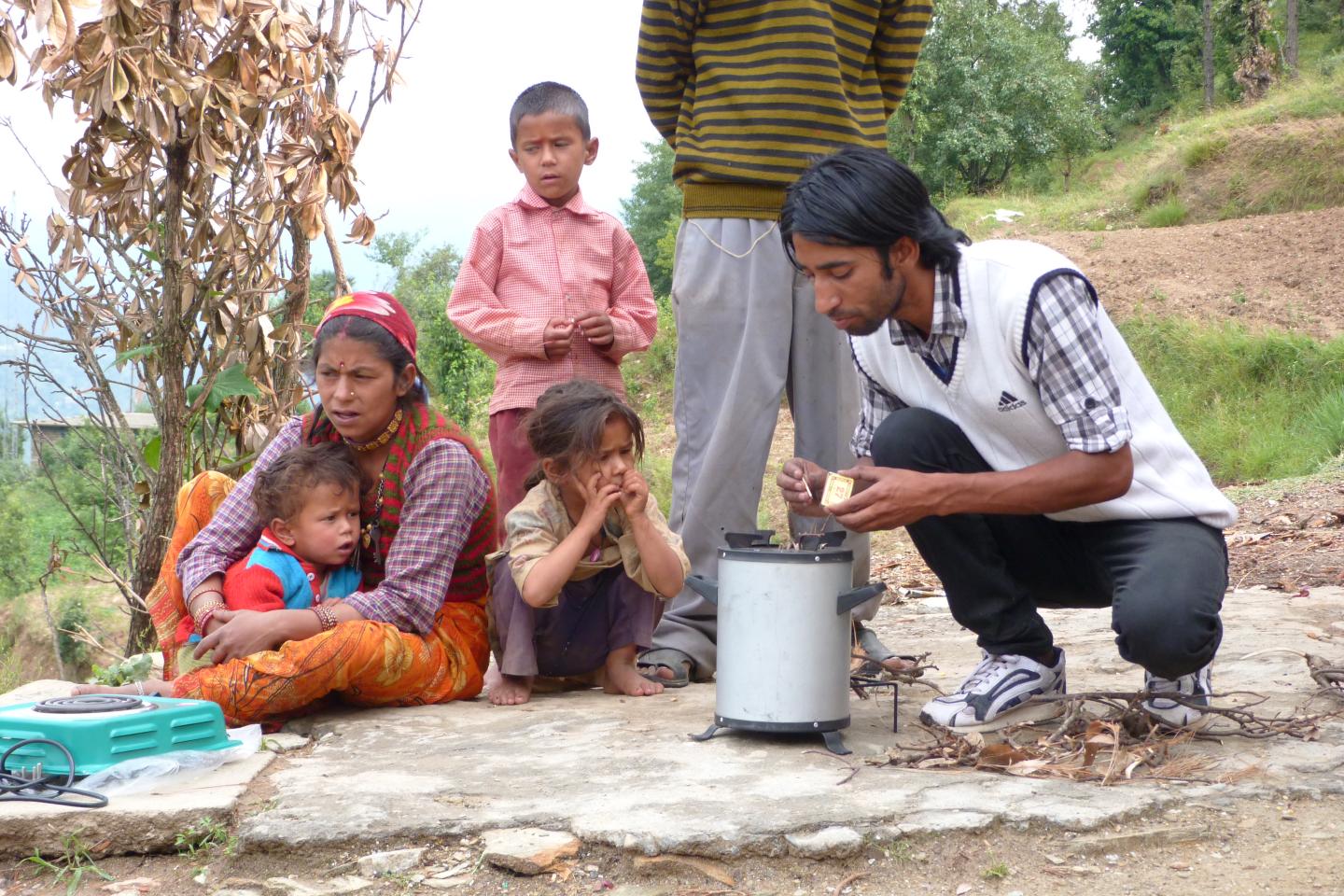Common business practices, including enticing rebates, improves adoption of new cookstoves in rural India

Credit: Duke Global Health
DURHAM, N.C. – Global health efforts to design and deliver improved cookstoves don’t always catch on. Experience has shown poor households in rural settings will rarely pay for or use these new stoves, which are intended to lower firewood demands and improve indoor and outdoor air quality.
However, adopting some common business practices, such as upgrading the supply chain, performing careful market analysis and offering price rebates, can increase purchase and adoption of improved cookstoves by as much as 50 percent in rural India, according to a new study led by Duke University researchers.
Three billion people still rely on traditional cookstoves that use solid fuels such as wood or coal. These stoves contribute to climate change through carbon emissions, deforestation and toxic air pollution, which contributes to poor health among users and their communities.
Improved cookstoves use either electricity or biomass as an energy source. Switching to them can deliver ‘triple wins’: better household health, better environmental health and reduced climate change emissions.
The adoption of improved cookstoves has been slow, however, likely because of constraints imposed by differences in markets, culture and geography.
“Previous studies have found low demand for these cookstoves, however, our study found that when barriers to adopting the stoves were addressed, the demand was high,” said Subhrendu Pattanayak, Oak Professor of Environmental and Energy Policy at Duke’s Sanford School of Public Policy and lead author of the study.
“A big question for policy scientists has been: Can we figure out what technology and energy and environmental services people want, and use that understanding to get people to pay for them? Our study shows that we can,” he said.
The Duke researchers took a novel approach by implementing the study in three phases — diagnose, design and test — over a period of five years.
In the first phase, the researchers analyzed existing research on improved cookstove adoption, and looked at sales across different potential study communities, which provided insight into both demand- and supply-side barriers to adoption. They found no common strategies for promoting changes in cooking behavior, but instead concluded the socio-economic case for adoption was influenced by local context. They then conducted focus groups in more than 100 households in 11 rural Indian communities, which allowed researchers to understand local cooking practices, perceptions of different stoves and preferences for stove features.
In the design phase, researchers worked with local organizations to implement eight small pilot programs in three different settings. This included small-scale testing of various supply chain issues such as marketing and home delivery, rebates and financing, and offers of electric and/or biomass cookstoves.
In the third phase, they conducted a field experiment to determine whether the combination of upgraded supply and demand promotion would lead to increased adoption of improved cookstoves. The field test included nearly 1,000 households in 97 geographically distinct villages in the Indian Himalayas.
The experiment showed that more than half of the intervention households bought an improved cookstove compared with zero purchases in the control villages. The demand was very price-sensitive, and the largest rebate, 33 percent of retail price, led to the largest purchase rate, 74 percent. In the areas that only had an upgraded supply chain and promotion without rebates, there was a 28 percent increase in ownership of the improved cookstoves.
Households overwhelmingly preferred the electric stove over the biomass stove, by a factor of two to one. Respondents liked the lack of smoke, speed of cooking and portability and attractiveness of the stove.
However, this preference for electric stoves highlighted the lack of a steady source of electricity. In India, rural electrification rates have been rising rapidly, growing from 57 to 83 percent between 2005 and 2015.
“Our work shows how energy access programs and projects can scale up and achieve success by understanding local demand and developing robust regional supply chains,” said co-author Marc Jeuland, professor of public policy and global health at Sanford.
The researchers also looked at whether stove ownership persisted over time, going back to the households three and 15 months after purchase. Most households still owned the stoves, although at the later date, 15 percent of households reported their stoves needed repair. The authors argue that barriers to improved cookstove adoption can be overcome and that households are willing to pay substantial prices for them, but that maintenance and sustainability require additional attention.
The interventions that helped improve adoption rates are similar to common marketing and sales practices of private firms, Pattanayak said. While the interventions appear costly on paper, the costs are less than the social and environmental benefits gained.
“Our findings suggest that market analysis, robust supply chains and price discounts are critical for improved cookstove adoption,” said Pattanayak.
The study appears the week of May 20 in the Proceedings of the National Academy of Sciences of the United States of America.
###
This research was partially funded by a grant from the United States Agency for International Development (USAID) (Cooperative Agreement GHS-A000-09-00015-00) and a grant from the Office of the Provost of Duke University.
CITATION: “Experimental Evidence on Promotion of Electric and Improved Biomass Cookstoves,” by S.K. Pattanayak, M. Jeuland, J.J. Lewis, F. Usmani, et al. Proceedings of the National Academy of Sciences of the United States of America, May 20, 2019.
DOI: 10.1073/pnas.1808827166
Media Contact
Jackie Ogburn
[email protected]
Original Source
https:/
Related Journal Article
http://dx.




